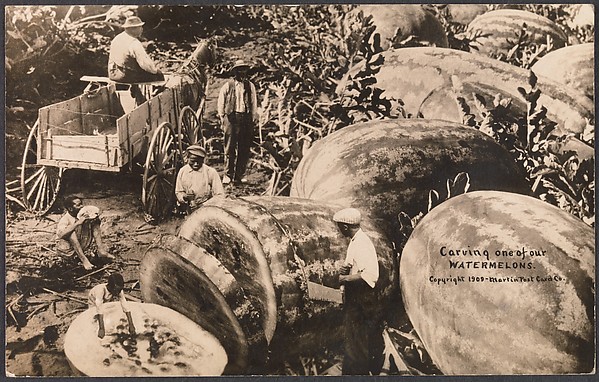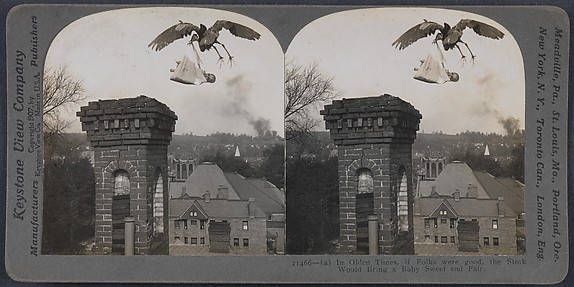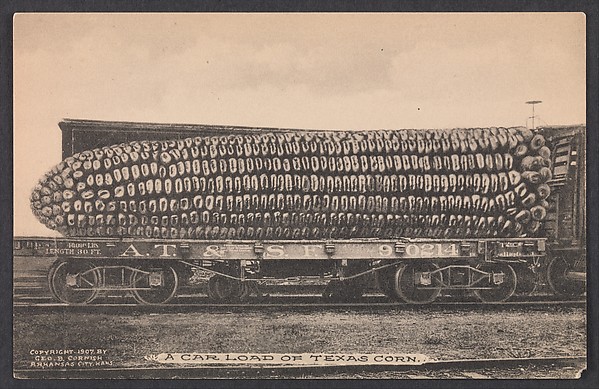While digital photography and image-editing software have brought about an increased awareness of the degree to which camera images can be manipulated, the practice of doctoring photographs has existed since the medium was invented. Faking It: Manipulated Photography Before Photoshop at The Metropolitan Museum of Art was the first major exhibition devoted to the history of manipulated photography before the digital age. Featuring some 200 visually captivating photographs created between the 1840s and 1990s in the service of art, politics, news, entertainment, and commerce, the exhibition offered a provocative new perspective on the history of photography as it traces the medium’s complex and changing relationship to visual truth. [via
The MET NYC]
If you missed the exhibition do not despair because the book is still available at the Amazon link below:
Unidentified American artist
Man on Rooftop with Eleven Men in Formation on His Shoulders
c. 1930
Leap into the Void ~ by Yves Klein
As in his carefully choreographed paintings in which he used nude female models dipped in blue paint as paintbrushes, Klein's photomontage paradoxically creates the impression of freedom and abandon through a highly contrived process. In October 1960, Klein hired the photographers Harry Shunk and Jean Kender to make a series of pictures re-creating a jump from a second-floor window that the artist claimed to have executed earlier in the year. This second leap was made from a rooftop in the Paris suburb of Fontenay-aux-Roses. On the street below, a group of the artist’s friends from held a tarpaulin to catch him as he fell. Two negatives--one showing Klein leaping, the other the surrounding scene (without the tarp)--were then printed together to create a seamless "documentary" photograph. To complete the illusion that he was capable of flight, Klein distributed a fake broadsheet at Parisian newsstands commemorating the event. It was in this mass-produced form that the artist's seminal gesture was communicated to the public and also notably to the Vienna Actionists. [via The MET NYC]

Maurice Guibert (French, 1856-1913)
Henri de Toulouse-Lautrec as Artist and Model
c. 1900
Unidentified artist
Man Juggling His Own Head
ca. 1880
Io + gatto ~by Wanda Wulz 1932
Wulz, a portrait photographer loosely associated with the Italian Futurist movement, created this striking composite by printing two negatives—one of her face, the other of the family cat—on a single sheet of photographic paper, evoking by technical means the seamless conflation of identities that occurs so effortlessly in the world of dreams.[via The MET NYC]
The Pond - Moonrise ~ by Edward J. Steichen 1904
Using a painstaking technique of multiple printing, Steichen achieved prints of such painterly seductiveness they have never been equaled. This view of a pond in the woods at Mamaroneck, New York is subtly colored as Whistler's Nocturnes, and like them, is a tone poem of twilight, indistinction, and suggestiveness. Commenting on such pictures in 1910, Charles Caffin wrote in Camera Work: "It is in the penumbra, between the clear visibility of things and their total extinction into darkness, when the concreteness of appearances becomes merged in half-realised, half-baffled vision, that spirit seems to disengage itself from matter to envelop it with a mystery of soul-suggestion." [via The MET NYC]
Human Relations ~ by William Mortensen 1932
Mortensen began his career as a Hollywood studio photographer, turning out glamour portraits of stars such as Clara Bow and Jean Harlow. In the early 1930s he established a photography school in Laguna Beach, where he refined and promoted his own aesthetic—an eccentric blend of late Pictorialism, Surrealism, and Hollywood kitsch. Restlessly inventive in the darkroom, he employed a wide variety of techniques, including combination printing, heavy retouching, and physical and chemical abrasion of the negative. At times, his use of textured printing screens gave his photographs the appearance of etchings or lithographs, as in this audaciously grotesque picture, which was prompted, according the artist, by an overcharged long-distance telephone bill. [via The MET NYC]

Uelsmann revived the technique of combination printing pioneered by such Victorian art photographers as Oscar Gustave Rejlander and Henry Peach Robinson in the early 1960s, when darkroom manipulation was denigrated by many proponents of straight photography as a flagrant violation of photographic purity. His pictures, which he creates in a darkroom equipped with seven enlargers, are filled with mind-bending paradoxes, oblique symbolism, and bizarre contrasts of scale. Uelsmann’s work is now considered an important precursor to the seamless compositing widely associated with digital photography and Photoshop. [via The MET NYC]
Jerry N. Uelsmann (American, born 1934)
Untitled
1969
Find ~ Will Connell 1937
In 1938 Connell, an advertising photographer and teacher at the Art Center School in Los Angeles, published In Pictures: A Hollywood Satire, a book of forty-eight photographs that used Surrealist fantasy and photomontage to lampoon the Hollywood studio system. The book offers up a vivid assortment of Tinseltown types: the cigar-chomping producer, the pushy stage mother, and this scantily clad starlet besieged by a horde of colossal sensation-seeking cameras. [via The MET NYC]
John Paul Pennebaker (American, 1903-1953)
Sealed Power Piston Rings
1933
Carving One of Our Watermelons~ by William H. Martin 1909
The tall-tale postcard was a uniquely American genre that flourished in the Midwest between about 1908 and 1915. The earliest master of the genre was William H. “Dad” Martin, a studio photographer in Kansas who established a successful sideline crafting photomontages of outlandish agricultural abundance. Intimately familiar with the tribulations of Midwestern farmers, including a fierce drought that parched the land for most of the 1890s, Martin lampooned the inflated promises of fertile soil, abundant rain, and hardy livestock that land companies used to lure settlers westward.
In Olden Times, if Folks Were Good, the Stork Would Bring a Baby Sweet and Fair~ by Keystone View Company, London 1907
A Pair of Hungry Pike ~ by Unknown, Canadian 1911
A Car Load of Texas Corn ~ by George B. Cornish 1910




























































,+1960+william+klein.jpg)


,+1956+William+Klein.jpg)




